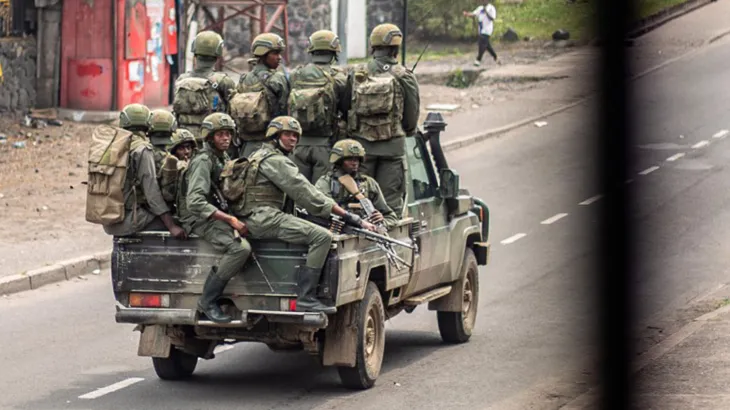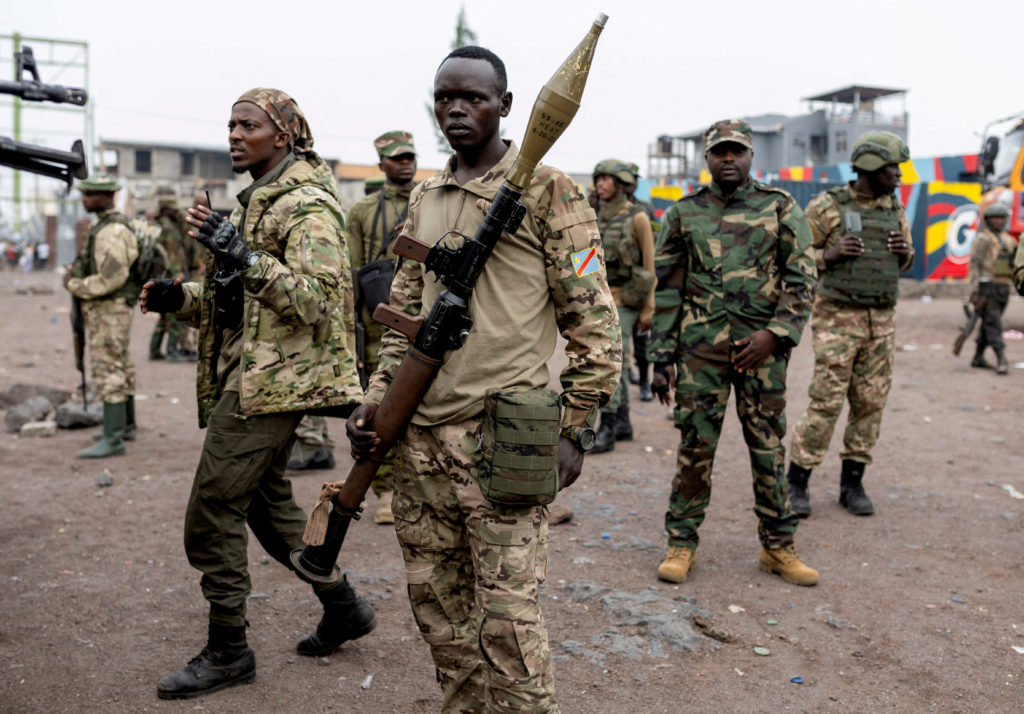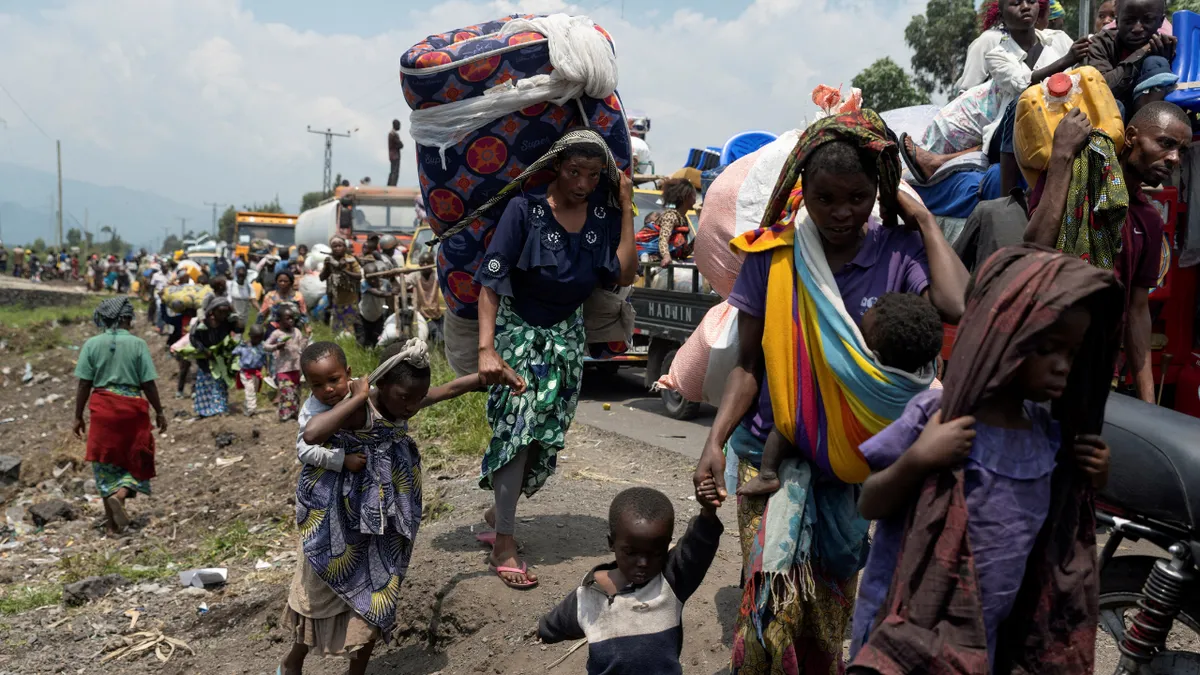The Rwandan-backed armed group, M23, has declared a ceasefire in the region for humanitarian reasons, just days ahead of a planned high-stakes summit between Congolese President Félix Tshisekedi and Rwandan President Paul Kagame.
The ongoing conflict in the eastern Democratic Republic of the Congo (DRC) has attracted global attention, particularly with the latest development in the volatile region.
This announcement comes after days of escalating violence, which had led to the seizure of the provincial capital, Goma, and the intensification of fighting in neighboring regions, especially South Kivu.
The Ceasefire Announcement and Its Significance
On Monday evening, the Alliance Fleuve Congo, a political-military coalition which includes M23, announced its decision to implement a ceasefire from Tuesday onward.
The group cited humanitarian concerns as the primary reason for halting its military operations. This marked a temporary pause in the relentless fighting that has displaced thousands and claimed hundreds of lives in recent months.
The M23’s declaration of a ceasefire, however, is not unprecedented. The region has seen multiple ceasefire agreements over the last three years, but each has eventually broken down, leaving civilians in the crossfire. In this instance, the ceasefire is framed as a humanitarian gesture, yet many observers are cautious, given the history of failed agreements and broken truces.
Despite the pause in fighting, there are fears that the M23 may be repositioning its forces, with reports indicating that the group is reinvigorating its efforts in neighboring South Kivu, preparing for future offensives.
Read : Dead bodies litter the streets of Goma city after heavy explosions and gunfire by M23 in DR Congo
At the heart of the conflict lies the resource-rich North Kivu region, which has been a focal point for armed groups vying for control of mineral resources. The M23’s advance to Goma, the provincial capital, has further exacerbated tensions between Rwanda and the DRC, with accusations of Rwandan military support for the M23.
Read : Forbes’ World’s 10 Saddest Countries in 2024
The ceasefire could offer a temporary respite, but it remains to be seen whether it will lead to a lasting solution or if it will be another chapter in the protracted struggle for dominance in the region.
The Escalating Humanitarian Crisis
As the fighting subsides temporarily in Goma, the humanitarian situation in the region continues to deteriorate. The United Nations (UN) has expressed growing concern over the mounting human toll, with at least 900 deaths reported and nearly 3,000 individuals wounded in the most recent clashes. Goma, home to more than a million people, has become a symbol of the wider crisis facing eastern DRC.
In addition to the violence, the conflict has also caused widespread displacement, with thousands of civilians fleeing their homes in search of safety. The UN has warned of a potential humanitarian catastrophe in the region, emphasizing the need for urgent international intervention.
One of the key factors exacerbating the crisis is the lack of access to vital supplies and medical resources, with the closure of Goma’s airport severely hampering the delivery of aid.

The UN Office for the Coordination of Humanitarian Affairs (OCHA) has called on authorities to reopen the airport, which it describes as a “lifeline” for evacuations and the delivery of medical and humanitarian supplies.
The M23’s ceasefire, while offering a glimmer of hope for the moment, does little to address the root causes of the crisis. The conflict in the DRC’s eastern region is fueled by a complex mix of ethnic rivalries, armed group proliferation, and the competition for valuable minerals such as coltan and gold.
Rwanda’s alleged role in backing the M23 further complicates the situation, with accusations that the Rwandan military is actively supporting the group in a bid to gain access to these resources.
This involvement has prompted calls for a regional solution, with the UN and regional bodies urging both the DRC and Rwanda to find common ground in order to avoid further escalation.
Regional Diplomacy and International Pressure
The M23’s ceasefire declaration has come just days before a crucial summit in Dar es Salaam, Tanzania, where Congolese President Tshisekedi and Rwandan President Kagame are set to meet.
This summit, which is being convened by the East African Community (EAC) and the Southern African Development Community (SADC), represents a significant opportunity for diplomatic engagement and a potential turning point in the conflict.
The planned summit comes amid growing international pressure for both Rwanda and the DRC to de-escalate tensions and find a path toward peace.
The ongoing conflict has implications far beyond the DRC’s borders, with the possibility of further destabilization in the broader Great Lakes region. The involvement of regional organizations such as the EAC and SADC highlights the increasing recognition of the conflict’s regional dimension and the need for a collaborative approach to address the underlying issues.
South Africa has also played a key role in the situation, with President Cyril Ramaphosa pledging continued support for the DRC despite mounting pressure to withdraw South African troops deployed to the region as part of a peacekeeping mission.

The deaths of 14 South African soldiers in the conflict have sparked domestic calls for the country to pull its forces out of the DRC. President Kagame has been vocal in his criticism of the South African presence, accusing the soldiers of participating in offensive operations to assist the DRC government in suppressing its own people.
These tensions underscore the broader geopolitical dynamics at play, with various regional powers positioning themselves in the ongoing struggle for influence in eastern DRC. As the M23 and other armed groups continue to exploit the instability in the region, the need for a coordinated regional response has never been more pressing.
While the ceasefire offers a brief moment of relief, the path to a lasting peace will require sustained diplomatic efforts, concrete actions to address the humanitarian crisis, and a long-term commitment to stability in the region.
The M23’s declaration of a ceasefire in the DRC is a significant development in the ongoing conflict, but its true impact remains uncertain. As the international community watches closely, the coming summit in Tanzania will serve as a crucial test for regional diplomacy and efforts to resolve one of Africa’s most enduring and complex conflicts.
The humanitarian situation in eastern DRC remains dire, and while the ceasefire provides a temporary pause in the violence, the underlying issues that fuel the conflict remain unresolved.
The coming days will be critical in shaping the future of the region, and the actions of regional leaders will determine whether this ceasefire is a step toward peace or simply another chapter in a prolonged and devastating conflict.
let’s enjoy few years on earth with peace and happiness….✍🏼🙏

